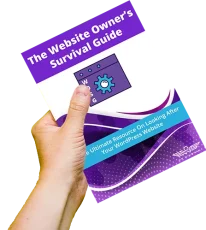In this lunchtime #WPQuickies, I talk about the pros and cons of running WordPress on Amazon Web Services (AWS).
What Is Amazon Web Services?
Amazon Web Services (AWS) is an on-demand cloud computing platform that provides access to large-scale cloud computing capabilities without having to build its own physical server farm.

Although AWS is billed on a pay-as-you-go basis, the subscription fee will vary based on the hardware, software, and network features you choose, as well as availability, security, and service requirements.
AWS is the collective name for hundreds of cloud computing services.
It offers over 200 services from data centres globally.
There are millions of customers running AWS from individuals to enterprises.
Some of the services offered include:
- Amazon Simple Storage Service (Amazon S3): Cloud file storage
- Amazon Elastic Compute Cloud(EC2): Virtual computer clusters pre-installed with application software (including databases and web servers).
- AWS Lambda: This is a serverless, event-driven computing platform designed to build on-demand applications that can run code in response to specific events
WordPress On AWS
So what does this mean for setting up a WordPress server on AWS?
It means using an AWS web server and an AWS database server.
There are many ways of installing WordPress on AWS but the easiest method is using Lightsail.
What Is AWS Lightsail?
Lightsail is a cloud platform that provides everything you need to deploy and host your WordPress website, including instances, managed databases, static IP addresses, and load balancers.

It’s designed to be beginner-friendly and the interface is very similar to cPanel or Plesk.
The Lightsail management console provides easy access to all the core AWS configuration options, so you can configure your server, your static IP addresses, and the DNS (Domain Name System) settings without any specialist assistance.
If you’re an individual or run a small business that doesn’t have a system administrator on hand, then you can easily use Lightsail to create, deploy, and maintain a self-hosted WordPress website.
Using Lightsail, you can typically bring a host online within minutes, even if you have zero previous AWS experience.
First, select your instance location.
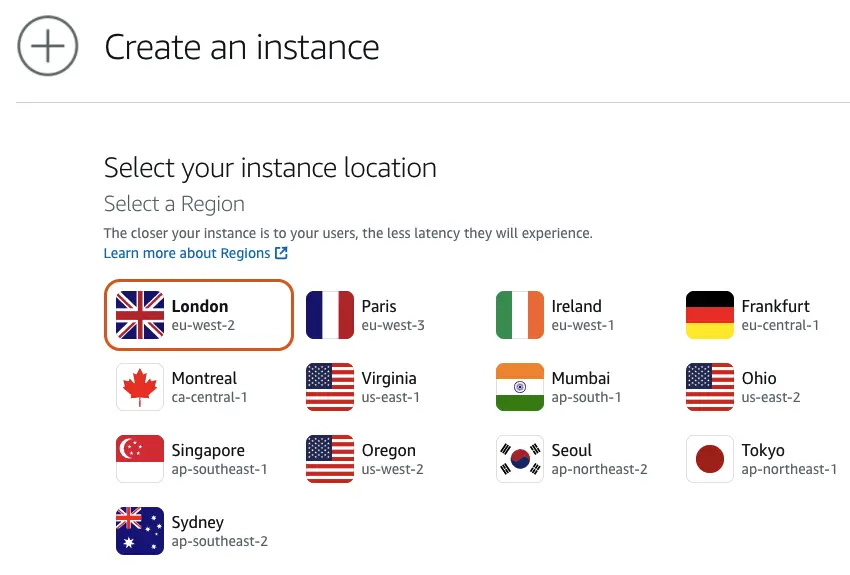
Next, choose your instance plan with the resources you need.
Instances are pretty cheap if you want to start off with a small website or blog. You can upgrade/downgrade at any time.
Remember the pricing is in USD.
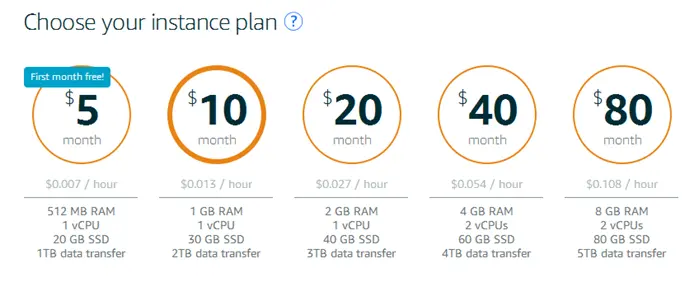
You can install pretty much anything on Lightsail and has some helper one-click instance installers.
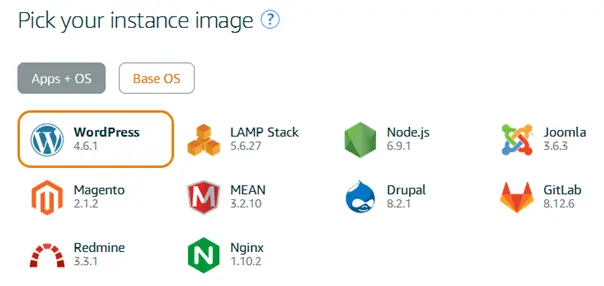
You have browser-based SSH access so you can install any packages you need to support your WordPress instance like WP-CLI and configure PHP version and libraries.
There are a few more steps like configuring your DNS and creating a static IP address but you are stepped through the entire process within the Lightsail dashboard so you can’t really go wrong.
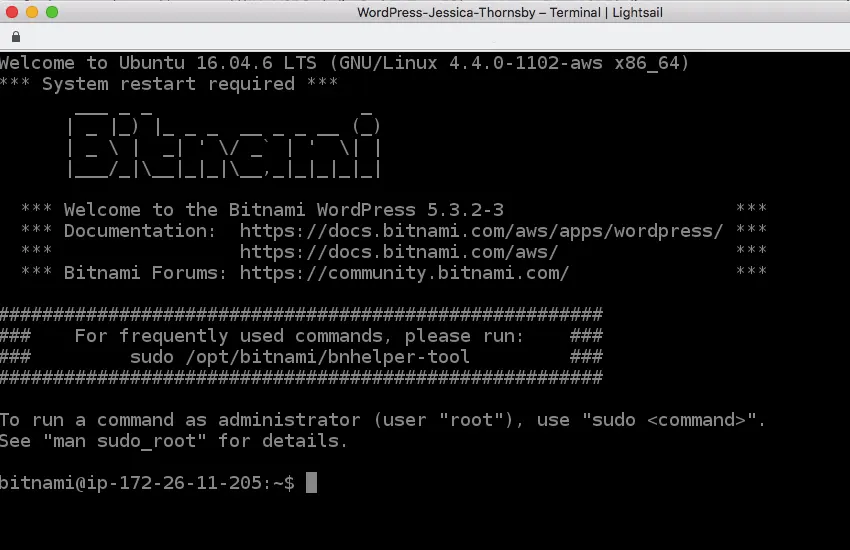
WordPress On AWS: Lightsail Pros
- Lightsail is a beginners product aimed at getting WordPress installed on AWS easy and quick
https://aws.amazon.com/lightsail/projects/wordpress/ - Flexibility: You can upgrade and downgrade your instances and services.
Being able to configure everything is one of the big pros for AWS - It’s super fast!!
Amazon probably has the best cloud server platform, Microsoft Azure is catching up - Lightsail has a set monthly price: You pay an hourly rate up to the total price of the package you are on.
WordPress On AWS: Lightsail Cons
One of the biggest negatives for using Lightsail on AWS is that it doesn’t auto-scale.
That’s probably fine for a beginner-level website but if you have an e-commerce site that has seasonal traffic or if you are running digital marketing campaigns it can be a really bad point.
You have to pay for technical support.
While you do have access to very good documentation and 24×7 customer support – that’s not the same as technical support.
So if you are not a technical buff then this may be a deal-breaker for you.
If you require technical support, then you’ll need to purchase a separate support package, which at the time of writing ranged from $29 per month to $15,000 per month.
Data and Privacy.
Unless Amazon has changed anything in the last few years, in the legal terms and conditions they are able to use any information on your website for their own purposes.
Just like they do with their consumer and e-commerce businesses.
They can also share your data with pretty much anyone they like.
WordPress On AWS: High-Performance Setup
Outside Lightsail, you can create a really complex, high-performance WordPress setup. Can you see how many AWS services are being used?
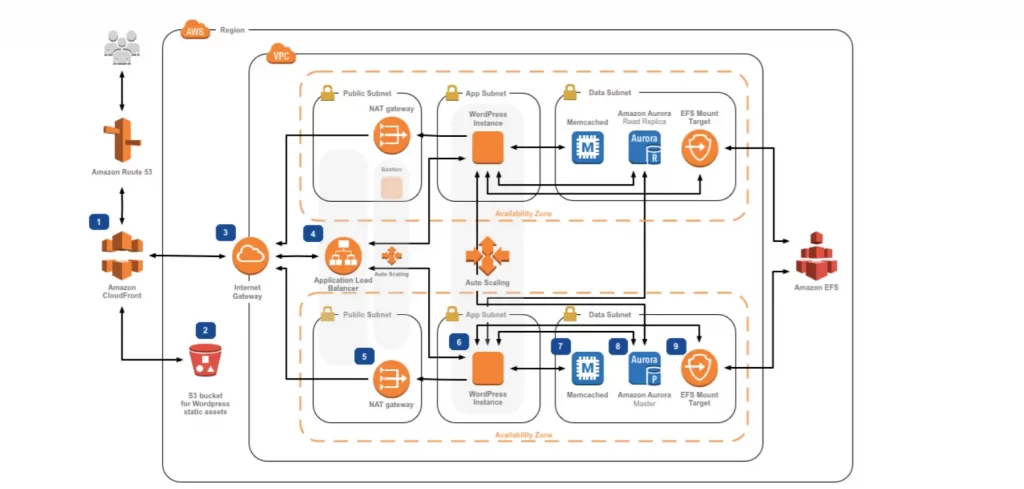
WordPress On AWS: Multiple Instances
Or you can set up a simple load-balancing setup.
In this case, we have two web server instances and two database instances (master and slave).
The load balancer directs traffic to the instance with the most resources available.
In this setup, we’re using S3 buckets to store our media content.
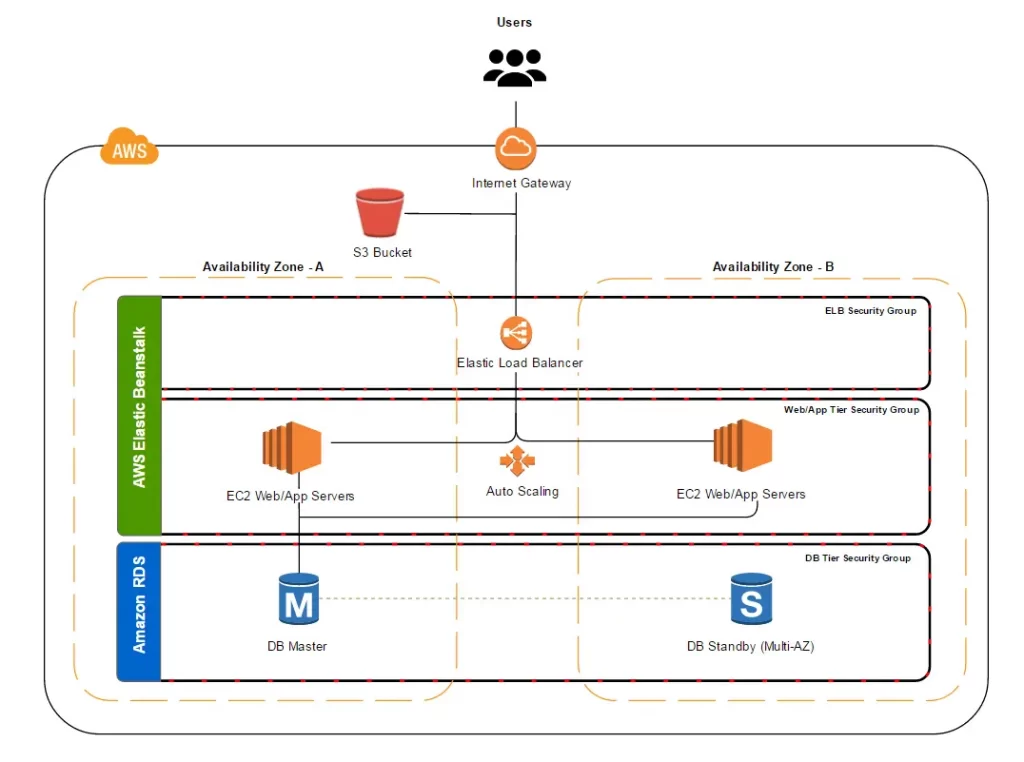
WordPress On AWS: Auto Scaling
Here’s another simpler AWS WordPress setup with an auto-scaling instance rather than multiple instances.
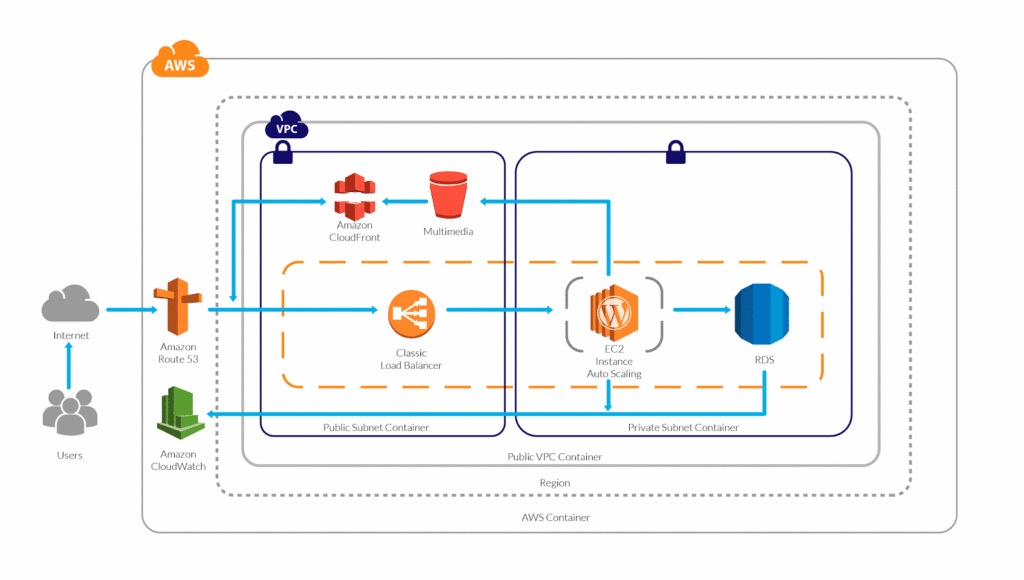
WordPress On AWS: General Pros
- It’s super fast – that’s probably one of the biggest benefits of running WordPress on AWS
- Flexibility: You can have total control over every AWS service.
Fine-tune the environment to your exact requirements - Auto-scaling: You can set up AWS to load balance traffic to multiple web servers and spin up and down instances depending on traffic
Being able to respond to high and low traffic and not suffer any outages is super important to large-scale businesses - It’s a complete solution.
You can host the entire web solution stack from within AWS – no need to go anywhere else.
Register and configure a domain name and DNS with Route 53, set up an EC2 web server, set up an RDS database, install and run WordPress
WordPress On AWS: Cons
If we zoom out to the regular AWS where the web servers are called EC2 and the database is RDS then unless you are topping 60,000 unique visitors per month then AWS is likely going to be overkill and you’ll get a better value with a managed WordPress host.
Pricing is super expensive.
While you can add some limits on each service, in general, the more you use the more your credit card gets charged and if you get picked up on TV or radio that’s going to cost you a lot.
Pricing is a complete pain in the butt with Amazon.
It’s super complex and gives me a headache trying to work things out even using their calculator service.
What are your thoughts on using WordPress on Amazon Web Services?
#WPQuickies
Join me every Thursday at 1 pm Sydney time for some more WPQuickies – WordPress tips and tricks in thirty minutes or less.
Broadcasting live on YouTube and Facebook.
Suggest a #WPQuickies Topic
If you have a WordPress topic you’d like to see explained in 30 mins or under, fill out the form below.
https://forms.gle/mMWCNd3L2cyDFBA57
Watch Previous WPQuickies
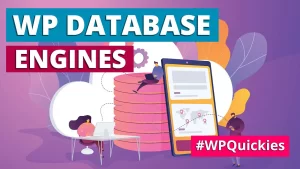
Which Database Engines Can WordPress Use?

